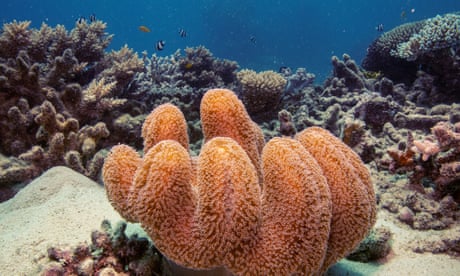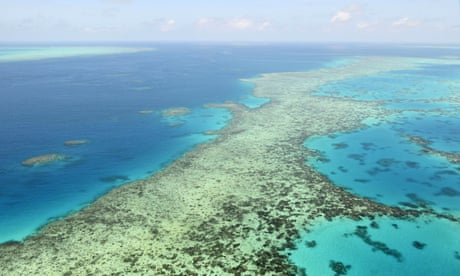Extract from The Guardian
The government should be working to save the reef not fighting Unesco, marine experts say.

Last modified on Sun 27 Jun 2021 06.01 AEST
“When things get really crazy above the water line, I flee to the sea. Our reef speaks to the identity of every Belizean, and we say that with pride.”
Janelle Chanona is a former television news anchor in Belize, the tiny central American country on the Caribbean Sea famed for its world heritage barrier reef – the second largest on the planet.
Earlier this week, Unesco recommended the planet’s biggest – the Great Barrier Reef – should be placed on a list of world heritage sites “in danger”.
Chanona, who now leads a group of conservationists in the country for Oceana, knows exactly what that means.
In 2009, the world heritage committee put Belize’s Caribbean jewel on the same list.
Illegal fishing, coastal and island developments and the threat of oil and gas drilling meant the country wasn’t doing enough to preserve the site.
The country, bordered by Mexico and Guatemala, introduced a raft of new laws to stop the disappearance of mangroves, regulate fishing and outlaw oil and gas exploration.
In 2018, the world heritage committee scratched the “in danger” status. Now the Belize government has a new “Ministry of Blue Economy” and has renewed hope for its reef.
“We want to stay vigilant now,” Chanona says.
A wake-up call to the government
The University of Queensland marine biologist Prof Peter Mumby’s career has straddled the two great reefs of Australia and Belize. His wife of 22 years is Belizean. “The reef is very ingrained in their identity,” he says.
He says even before Belize hit the danger list, fishermen were seeing the damage from overfishing – particularly on parrot fish that help clean the reef – and were themselves lobbying the government to put restrictions on their catch.
Mumby says both reefs are now being hit by climate change, but he worries a danger listing for Australia’s reef could re-enforce a wrongly held perception globally that the reef is doomed.
“But there does need to be that wake-up call to the commonwealth government,” he says. “The reef is facing an uncertain future, for sure.”
There are 53 sites on the world heritage “in danger” list, including Florida’s Everglades, Indonesia’s Sumatran rainforests, the city of Vienna and Liverpool’s historic waterfront (which could lose its world heritage status entirely at next month’s meeting).
Next month’s meeting, chaired by China, will decide the Great Barrier Reef’s status.
Unesco’s recommendation is that the reef should be placed on the “in danger” list and the next version of the Queensland and federal governments’ cornerstone joint Reef 2050 policy should be explicit about how Australia will bring greenhouse gas emissions down in line with the Paris climate agreement.
If the committee accepts the recommendation in full, then Unesco wants to carry out a monitoring mission “to develop a set of corrective measures” that would also look at driving improvements to water quality – another key area of concern.
Some tourism figures in Queensland fear an “in danger” listing will be more bad news that could discourage international visitors from travelling once borders reopen.
“I really think that’s a furphy,” says Dr Jon Day, a former Australian government representative on the world heritage committee and a veteran of the meetings.
He says when other sites have been placed on the danger list, “there’s no indication that visitor numbers went down”.
“I really think that the international tourists are already well aware of the issues facing the reef.”
Some tourism operators point out that there are still many great places to go on the Great Barrier Reef and visitors are still as awed by their experience as ever.
But Day says those “great areas” that operators rightly identify “won’t continue to be great in the future”.
“It’s a really short-sighted perspective. Those great areas are going to be suffering very soon.”
He says if the Queensland jewel does find itself on the danger list, there could be positives. “It’s not just a slap on the wrist, but actually a chance to bring this to the world’s attention.”
He says Australia lobbied intensively to keep the Northern Territory’s Kakadu national park off the list in 1999, after concerns over uranium mining and its effect on Aboriginal sites.
“That left a very sour taste in many countries’ mouths. People still talk about it,” he says. “This should not be about arguing and fighting. It is about the world recognising that its heritage is under threat and then doing something about it.”
‘Start taking climate policy seriously’
Prof Tiffany Morrison of James Cook University led research published last year into all the times when the world heritage committee has considered putting natural sites – known in UN language as “properties” – on the danger list.
Morrison found countries such as Australia with economies dependant on high-value natural resources – regardless of their state of development – tended to push back on Unesco’s recommendations.
If the committee did ignore Australia’s pleading this time, Morrison said, an appearance on the “in danger” list would mean “Australia would need to start taking climate policy seriously”.
She said: “We would hope that [climate policy] would get Australia back off the in danger list.
“I think [Unesco] are trying to force Australia’s hand. That is why we have these international conventions. They are supposed to have teeth.”
There were two competing forces at play as Australia tries to make its lobbying count, she said.
“This is actually about reputational risk, both from Australia’s and Unesco’s point of view,” Morrison said. “The more Australia gets away with its lobbying, the more reputational damage there is to Unesco.”
Dr Simon Cripps, the executive director of marine conservation at the international Wildlife Conservation Society, says when a site makes its way on to the world heritage list – as the Great Barrier Reef did in 1981 – “it’s not the end of journey, actually it’s the beginning”.
“As with your house or your car, sites need constant maintenance to keep them in a healthy condition,” he says. “Australia is a land of environmental paradoxes in that their fantastic work to conserve and sustainably manage the marine environment right around their coastline has set an example to so many other countries.
Back in Belize, the marine scientist and WWF campaigner Nadia Bood says it took “plenty of political will” to get her country’s reef off the danger list.
As a 15-year-old rural farm girl, Bood had never seen her country’s famous barrier reef until she dived in for a school field trip.
“It was just like, wow,” says Bood, from her home in Belize City. “It was then I decided to be a marine scientist.
“As humans, we are dependent on all the species. They allow us to live the life we are living. They give us our food and shelter and the reef protects us from storms.
“We have to try and protect them as much as possible. Australia and our reefs are sisters. We can be championing each other.”
.png)


No comments:
Post a Comment